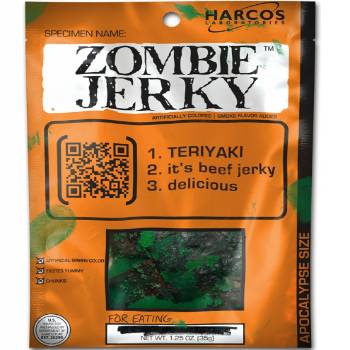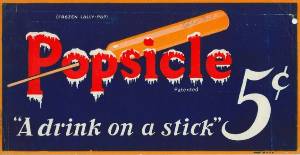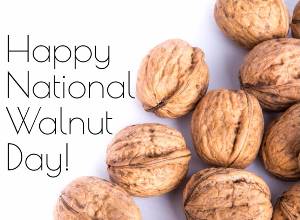June 12 is National Jerky Day
Today is National Jerky Day, created in 2012 by the Wisconsin Beef Council to bring awareness to the history, nutritional benefits and status of meat snacks as the “fourth-largest-grossing sector in the overall salty-snack category.”
For 2014’s celebration, Jack Link’s beef jerky company built a replica of Mount Rushmore, covered it in 1,600 pounds of jerky and displayed it in New York City’s Columbus Circle. They called the monument “Meat Rushmore.”

Meat Rushmore
Preserving meat via drying and salting dates back at least as far as Ancient Egypt. It became popular in Spain in the 1500s when conquistadors brought it back from South America. The name “jerky” is derived from the Native American Quechua term “ch’arki” (dried meat).
Today, there are hundreds of varieties: turkey, chicken, duck, buffalo, alligator, ostrich, kangaroo, camel, rabbit, python, antelope, rattlesnake, elk, venison, wild boar, alpaca, and pheasant in flavors like ginger-lime, ghost pepper, butter mesquite, and honey sriracha.
Shark, salmon, tuna, and trout are available for pescetarian jerky fans. One purveyor offers gluten-free buffalo and elk jerky. Another offers pineapple jerky for herbivores. (Caution: Manufactured in a plant that processes meat and meat-like products.)
One variety that hasn’t survived is Zombie Jerky. From the tone of some of its Amazon reviews, it may have, in fact, consisted of the undead. It’s a shame the company went under after its epic struggle to get its packaging approved. The USDA found the original description of the main ingredient, “naturally occurring zombies,” factually inaccurate, objected to “teriyucki” as a confusing flavor, and rejected the assurance that the product is “mutagen-free” and “doesn’t turn you into a zombie” as potentially misleading. (Everyone knows mutagens are a tasty side-benefit of jerky!)

Are you trying to cut back on coffee but need a morning pick-me-up? Perky Jerky is marinated with guarana seeds, which have twice the caffeine of coffee beans, but is all-natural and therefore healthier for you, right? Well, coffee beans are natural, too, and have the advantage of containing little to no jerky, as far as we know.
In 2023, Meat+Poultry reported on a new cannabis-infused jerky created by The Good Shroom Co:
OG Jerk contains 60 grams of beef jerky (2 x 30 gram vacuum sealed packages) infused with a total of 9 mg of THC (2 x 4.5 mg of THC vacuum sealed packages), which permits the consumer to consume in doses accordingly and enjoy beef jerky in the process.
We applaud the genius of a product made to simultaneously create and cure the munchies. In February of 2025, the Canadian company changed its name to Mercanto Holdings. Some corporate buzzkill must have said it sounds more legit. At least its Canadian stock exchange designation will remain MUSH, so there’s that.
Alas, even OG Jerk couldn’t make us hungry enough to try Earthworm Jerky. This Amazon reviewer takes us on a stream-of-consciousness rollercoaster ride.

It reminds me of an old joke. One woman says to the other, “The food here is terrible!” And the other says, “Yes, and such small portions!”
However you decide to celebrate, have a happy National Jerky Day!

 Donut Day, celebrated in the U.S. on the first Friday of June.
Donut Day, celebrated in the U.S. on the first Friday of June. Today is National Grape Popsicle Day. In 1905, 11-year-old Frank Epperson was sitting on his porch, stirring powdered drink mix into water, when he was called inside and forgot to bring the cup with him.
Today is National Grape Popsicle Day. In 1905, 11-year-old Frank Epperson was sitting on his porch, stirring powdered drink mix into water, when he was called inside and forgot to bring the cup with him. Today is National Walnut Day, created in 1949 by the
Today is National Walnut Day, created in 1949 by the